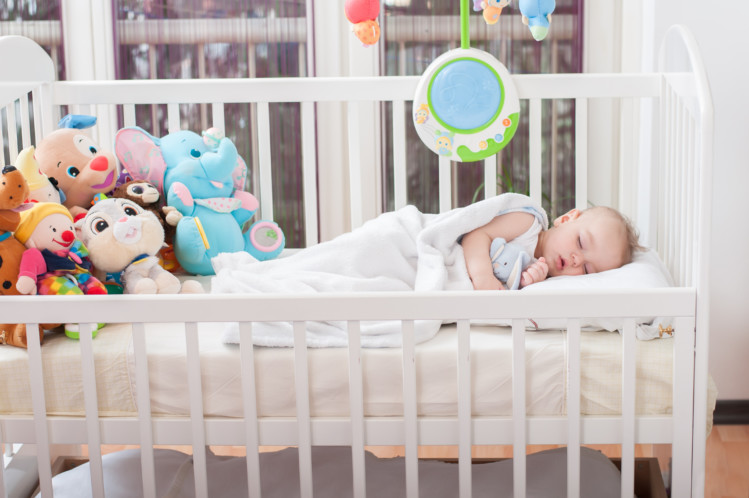 When thinking about crib safety, the focus is to prevent accidents and SIDS, or Sudden Infant Death Syndrome, for your baby. Being alert to the possible dangers will help you avert problems before they arise.
When thinking about crib safety, the focus is to prevent accidents and SIDS, or Sudden Infant Death Syndrome, for your baby. Being alert to the possible dangers will help you avert problems before they arise.
6 Ways to Make a Crib Safer
You can make a crib safer by being alert to potential problems.
The basic requirements of crib safety are:
- A firm tight-fitting mattress so the baby cannot get trapped between frame and mattress. Most mattresses have adjustable heights which you will need to lower when the baby can stand.
- No loose screws or other pieces that the baby can swallow.
- The slats should be close enough that the baby cannot slip through.
- No corner posts for the baby’s clothing to catch on.
- No places that the baby’s head can get trapped in the headboard or footboard.
- Keep any cords from nursery mobiles or nearby blinds out of the way.
Has This Crib Been Recalled?
If you want to make sure the crib has been tested for safety and quality, look for Juvenile Products Manufacturing Association certification. To learn if a crib has been recalled, check BabyCenter Product Recall Finder.
Safety Standards Have Changed
From 2011, drop-side cribs have been banned because the drop side can come loose or detach itself, trapping the baby or allowing her to fall out. Be aware of this issue if you are buying an older model crib.
The American Academy of Pediatrics now advises against crib bumpers or sleep positioners. The extra padding could potentially cover a baby’s airway and increase the risk of SIDS. Continue to stay abreast of new developments and latest advice regarding the safety of your baby.
If buying an old crib, make sure there are none of the following:
- Sharp edges
- Peeling paint
- Lead paint
- Discontinued features
- Missing/broken slats
Remove Dangers and Monitor Crib Activity
Make sure bedding fits the mattress properly and cannot come loose as there is a risk of suffocation. Do not overdo the amount of bedding as babies quickly overheat.
Sleepwear should not have ribbons or buttons which can be swallowed. Avoid drawstrings on clothing and toys, or baby gyms, as these present a hazard.
For added safety, do not leave your child unattended in a crib with a feeding bottle. Small pieces of rubber from the teat present a potential choking hazard. Put the baby to sleep on his back and consider getting a baby intercom, which will allow you to monitor your child even while he is asleep or playing in the crib.
Don’t forget a rested mom is an alert mom. Grab a quick nap every time your baby dozes off.

